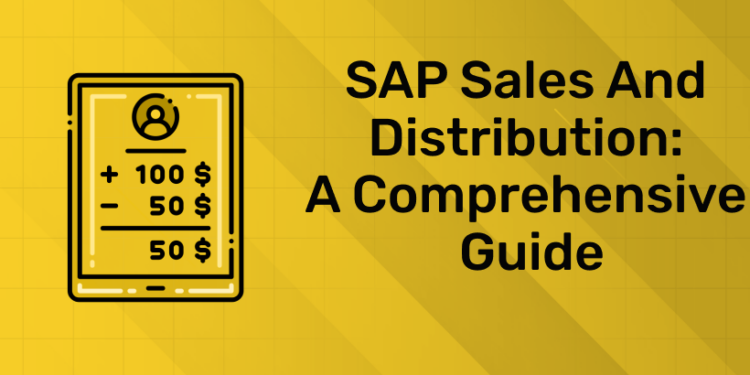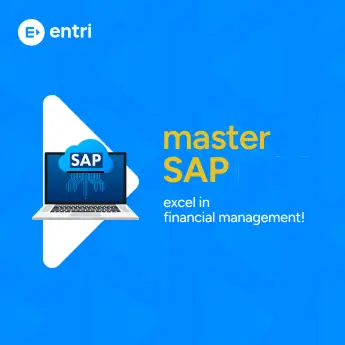Table of Contents
Businesses today thrive on the ability to manage their processes effectively, especially when it comes to sales and distribution. SAP, the world’s leading enterprise resource planning (ERP) system, provides a powerful module known as SAP SD (Sales and Distribution) to manage these crucial aspects. Whether you’re in charge of order processing or ensuring deliveries go out on time, SAP SD forms the backbone of efficient sales and distribution strategies. This comprehensive guide will walk you through everything you need to know about SAP SD, its key components, benefits, use cases, and career opportunities.
SAP Sales and Distribution – Insights
SAP SD, or Sales and Distribution, is one of the most integral modules within SAP’s ERP system, designed to manage everything from product sales, to order processing, shipping, invoicing, and payment collection.
- At its core, SAP SD is responsible for ensuring that businesses handle their sales and distribution workflows smoothly, efficiently, and accurately.
- Unlike standalone software, SAP SD is fully integrated within the SAP ERP system, connecting seamlessly with other critical modules like SAP FI (Financial Accounting), SAP CO (Controlling), SAP MM (Materials Management), and SAP SCM (Supply Chain Management).
- This integration ensures that all departments work with consistent, real-time data, enabling quicker decision-making and more efficient operations.
SAP Sales and Distribution – Integration
One of the strengths of SAP SD lies in its integration with other SAP modules. These collaborations streamline operations across departments, creating a more cohesive and transparent workflow.
Financial Accounting and Controlling (SAP FICO)
SAP SD and FI/CO work together to streamline financial operations. For example, when a sales order is created, SAP SD generates billing documents that are immediately recorded in the financial system.
Materials Management (SAP MM)
Material availability and inventory management are tightly integrated between SAP SD and MM. When a sales order is placed, SAP SD checks the availability of products in real-time, ensuring customers get timely deliveries.
Supply Chain Management (SAP SCM)
SAP SD plays a pivotal role in the broader supply chain. The module helps connect customer demand to logistical execution, including procurement, production planning, and delivery tracking.
This deep integration across departments provides businesses with greater agility and a more streamlined operational approach.
SAP Sales and Distribution – Key Components
SAP SD is a complex module that can be broken down into several critical components. Each serves a specific function to ensure the entire sales and distribution process runs seamlessly. Below is a look at the essential components that make SAP SD such a powerful module:
SAP-SD Master Data (MD)
Master Data refers to essential information such as customer data, material data, and pricing conditions that form the backbone of the sales and distribution processes. Having well-maintained Master Data ensures that the system accurately processes orders and manages sales.
SAP-SD Sales (SLS)
This sub-module handles the sales process from the initial inquiry to order placement, and through to the final billing. It oversees every step of the sales cycle, including sales quotations, customer order creation, and contract management.
SAP-SD Shipping (SHP)
SAP SD’s Shipping component manages logistics, including delivery scheduling, packing, loading, and transportation planning. This sub-module is responsible for ensuring that goods reach customers within the agreed timeframe.
SAP-SD Transportation (TBA)
The Transportation sub-module handles all activities related to the transportation of goods. From planning transportation routes to carrier selection and tracking deliveries, this component ensures the smooth movement of products.
SAP-SD Billing (BIL)
The Billing module is responsible for generating invoices and managing all payment-related activities. This crucial aspect links directly to SAP FI for financial transactions, ensuring that billing information is accurately recorded.
SAP-SD Customer Sales Support (CAS)
This component manages all pre-sales activities such as inquiries and quotations. It also helps manage customer interactions and data, providing essential support throughout the sales cycle.
SAP-SD Foreign Trade (FTT)
The Foreign Trade module facilitates international sales, managing import/export regulations, customs processes, and foreign exchange considerations. Businesses that operate globally rely heavily on this feature for smooth cross-border sales operations.
Join to learn SAP SD from the Experts! Click for the demo class!
SAP Sales and Distribution: Benefits
Implementing SAP SD brings a host of advantages to businesses, improving operational efficiency, customer satisfaction, and profitability. Below are some of the most significant benefits:
Improved Customer Satisfaction
SAP SD ensures that customer orders are processed quickly and accurately, reducing delays and ensuring timely deliveries. A well-organized distribution process leads to higher customer satisfaction.
Better Data Management
By centralizing data across departments, SAP SD provides consistent and accurate information, ensuring that everyone works with the same data set. This reduces errors and streamlines workflows.
Enhanced Sales Monitoring
The module allows businesses to track their sales performance in real-time, providing actionable insights into customer behavior, product demand, and sales trends.
Seamless Integration
SAP SD’s deep integration with other SAP modules ensures that all business processes are interconnected, creating a more efficient and agile business environment.
Scalability
Whether you’re running a small business or a global enterprise, SAP SD can scale to meet the needs of your organization, making it an ideal solution for businesses of any size.
SAP Sales and Distribution: Use Cases
SAP SD is employed across a variety of industries, and its use cases are as diverse as the companies that implement it. Below are some real-world examples of how businesses use SAP SD to streamline their operations:
Retail Industry
A global retail company uses SAP SD to manage its extensive sales network. The module helps the company track inventory, handle customer orders, and ensure timely deliveries.
Manufacturing
A manufacturing firm leverages SAP SD to manage its distribution network, ensuring that products are delivered to wholesalers and retailers efficiently. The integration with SAP MM allows the company to keep an accurate track of materials.
E-commerce
An online retailer uses SAP SD to manage its entire order processing system, from customer inquiries to billing. The company uses SAP SD’s shipping component to coordinate deliveries and SAP FTT to manage international sales.
SAP Sales and Distribution: Career Opportunities
The demand for SAP SD professionals has been growing steadily as businesses continue to adopt ERP solutions to optimize their sales and distribution processes. Here are some career paths for those interested in pursuing SAP SD as a profession:
SAP SD Consultant
As a consultant, you’ll help companies implement and customize their SAP SD modules. This role requires a deep understanding of both business processes and technical know-how.
SAP SD Business Analyst
Business analysts use SAP SD to monitor and optimize sales processes. They help identify areas for improvement and work with technical teams to implement solutions.
SAP SD End-User
Many companies employ SAP SD end-users to manage the day-to-day operations of their sales and distribution workflows. This role involves working directly with the software to process orders, track shipments, and manage billing.
Project Manager for SAP SD Implementations
A project manager oversees the implementation of SAP SD in organizations. This role requires a balance of technical expertise and leadership skills to ensure a smooth rollout of the software.
Future Trends and Developments
As we look to the future, SAP SD will continue to adapt to changing business environments. Trends like AI-driven analytics, machine learning integration, and enhanced customer support tools are expected to make their way into SAP SD. Businesses can anticipate more automation, better data insights, and a stronger emphasis on personalized customer experiences as part of this evolution.
Learn SAP SD with Entri
If you’re ready to take the next step in mastering SAP SD, Entri offers a well-structured course tailored to both beginners and professionals. This course delves deep into the key components of SAP SD, providing you with hands-on experience and real-world use cases that will prepare you for a successful career in this field. You’ll learn everything from configuring master data to managing sales orders, shipping, and billing processes.
Explore Entri’s SAP SD Course to kickstart your journey and gain an edge in the competitive world of ERP systems. Entri’s expert instructors and practical approach ensure that you’ll not only understand the theory but also apply it effectively in real-world scenarios.
Conclusion
SAP SD is a powerful tool that plays a crucial role in the smooth functioning of business operations. With its ability to handle everything from order processing to billing, it has become an indispensable module for organizations across industries. As businesses continue to evolve, SAP SD is likely to see further developments, incorporating new technologies to make sales and distribution even more efficient.
Master SAP with Expert-Led Courses
Unlock your potential with our comprehensive SAP courses! Learn essential modules like SAP MM (Materials Management), SAP SD (Sales and Distribution), and SAP FICO (Financial Accounting and Controlling) from industry experts.
Know MoreFrequently Asked Questions
What is SAP SD?
SAP SD stands for Sales and Distribution and is a core module in SAP’s ERP system that handles sales orders, shipping, billing, and customer interactions
Why is SAP SD important for businesses?
It ensures that sales and distribution processes run efficiently, integrating with other SAP modules to provide a comprehensive operational framework.










